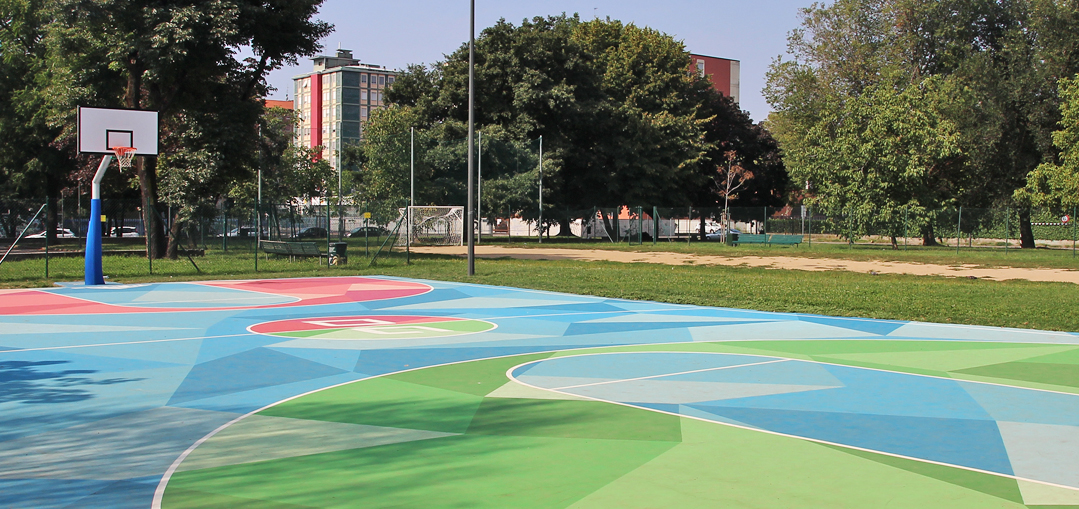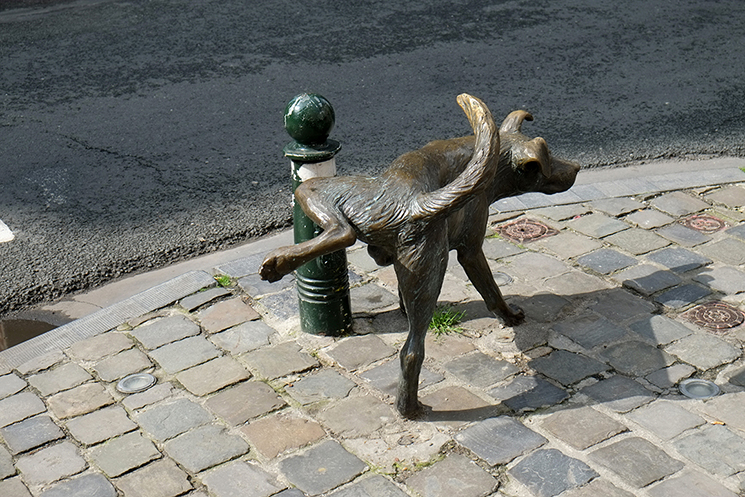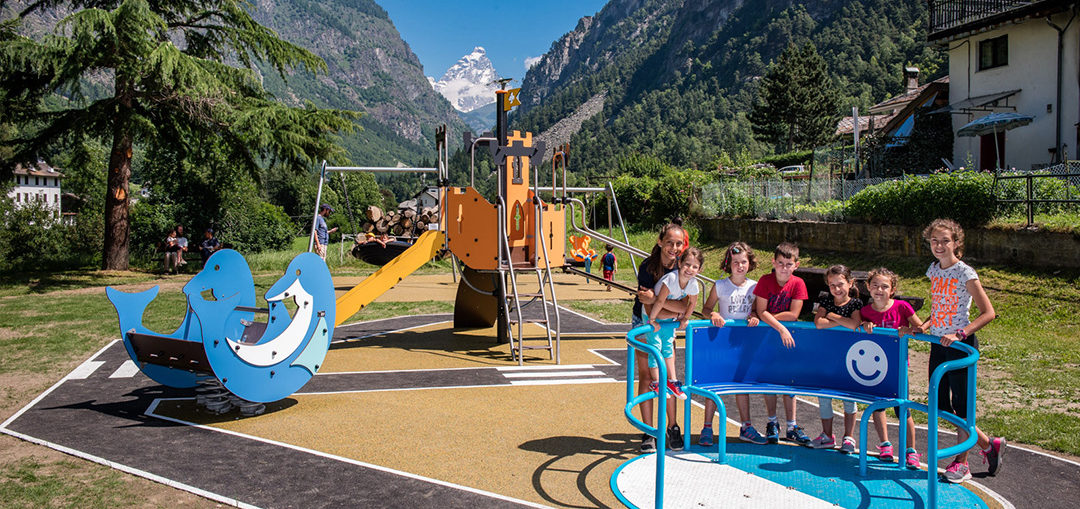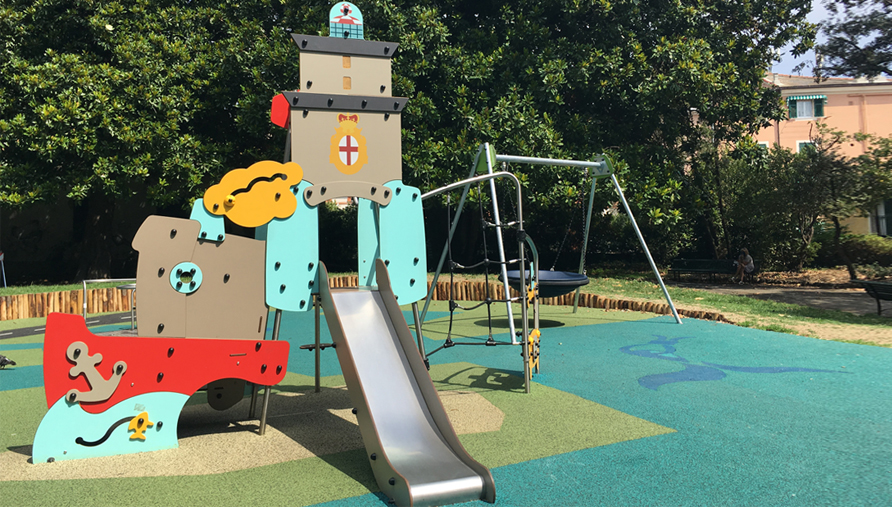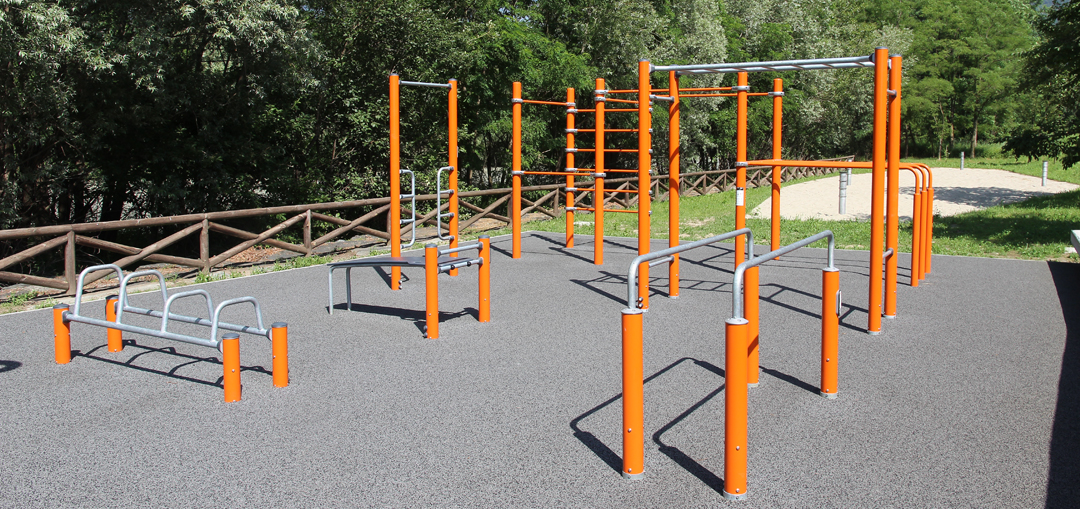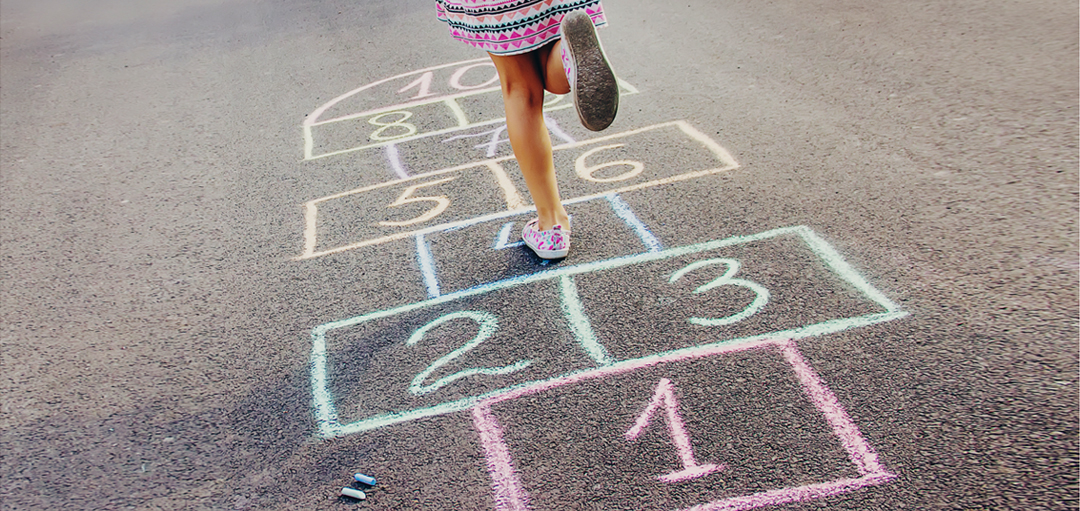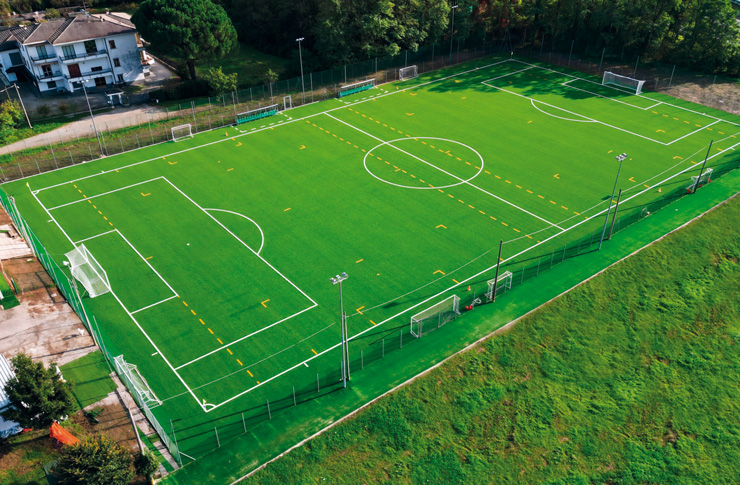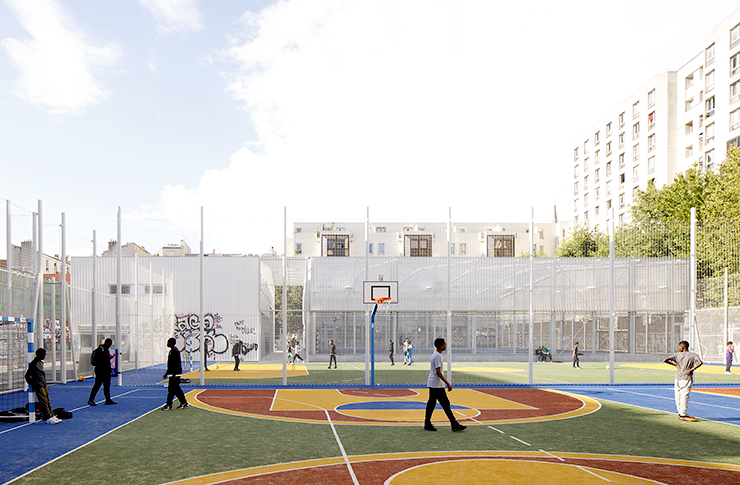Games for children, in an urban park, must be adapted to the needs of a wider audience and help to train and educate them to a culture of participation and integration, being able to recognize, from the outset, at the time of the game, in the diversity of others a resource.
Inclusive games
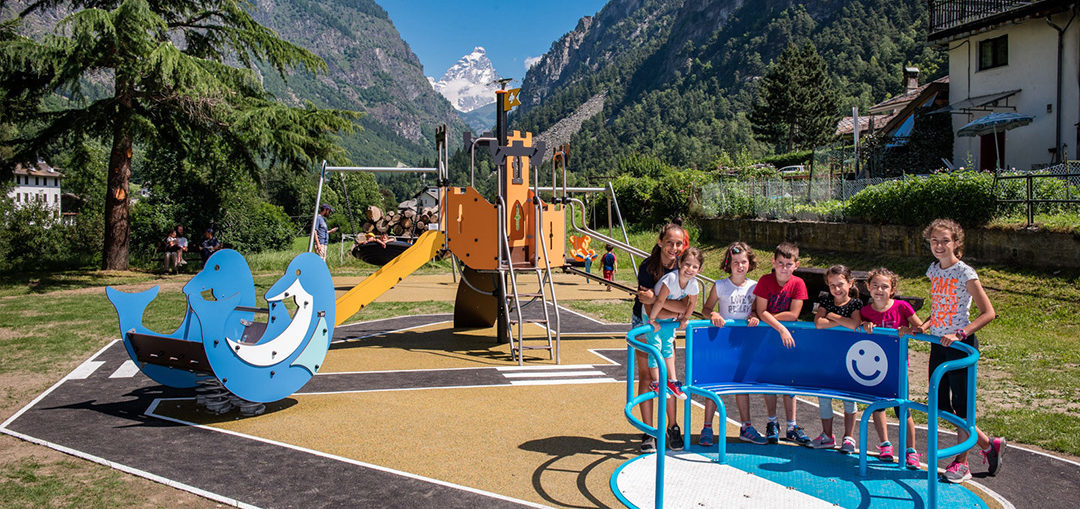
Inclusive playground in Val d’Aosta (ph. Proludic)
From the point of view of the structure, these areas must have the accessibility requirements already explained with regard to the external areas (surfaces coplanar to pedestrian paths, or with these connected by inclined planes with adequate slope; entrance gates with a minimum opening of 90 cm, etc.). The floor materials must be carefully considered, so that they are solid, non-slip and safe for children in wheelchairs (synthetic material; compacted and stabilised earth or gravel, etc.). Areas with sand must be fenced off and clearly diversified from other areas. Furnishing objects, as well as all those provided for in green areas, must not have dangerous edges or protrusions.
Playgrounds should be organized into small spaces, where children can play in small groups, and into large areas for games that require a larger surface area, so that they can be used for different types of activities: sand play, jumping, water play, sports and gardening. Play facilities can be designed to stimulate more senses and articulate so as to provide motor stimulation to children with reduced mobility.
Through some additions and appropriate measures, in fact, you can create games that are usable by all children, disabled or not.
So the carousel is designed to be safe for all; the swing has a seat where everyone can go up together; the castle has a ramp to be crossed without having to overcome architectural barriers; some games are located at a height that can be used (even) while sitting in a wheelchair.
Taking into account the sensory disabilities, often neglected, of blind/visually impaired, deaf/hearing people, it is possible to integrate water fountains, sounds, fragrant plants and other natural elements with the games, which, by stimulating the tactile, acoustic and olfactory sensibilities of each child, allow a better knowledge of the world of nature in which we live.


